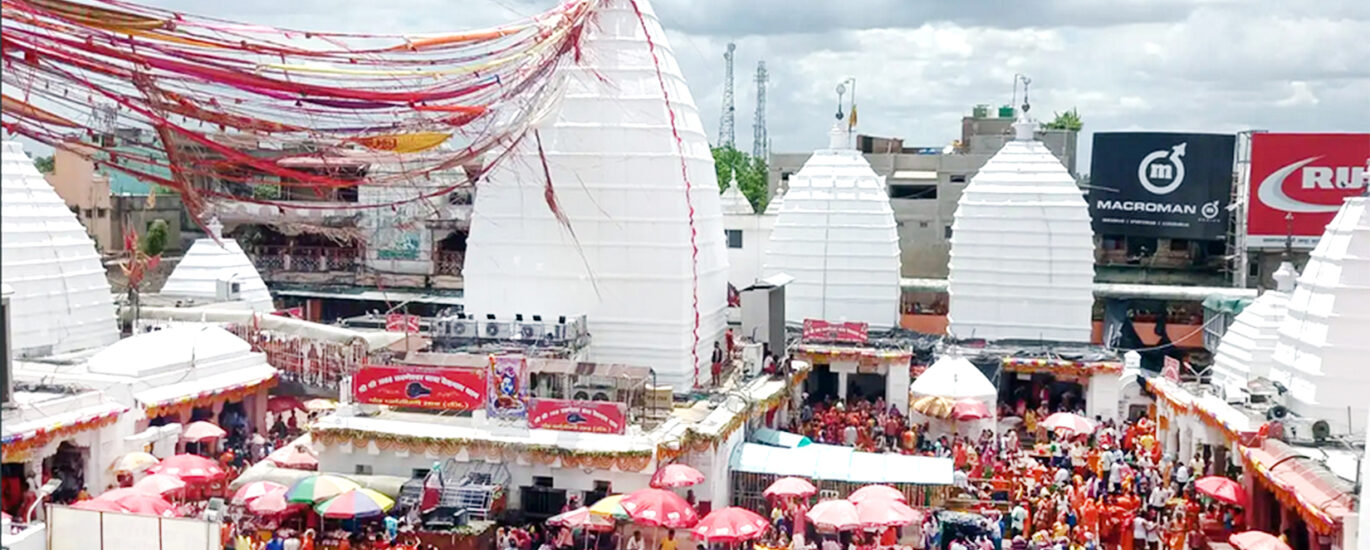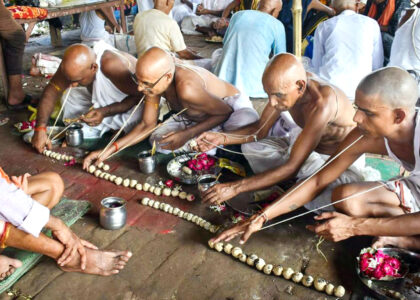The Kanwar Yatra in the month of Sawan is considered an easy way to please Lord Shiva. It is said that the distance between Lord Shiva and the devotees gets reduced in this month. Baidyanath Nagri, Deoghar is crowded with Shiva devotees throughout the year, but in the month of Shravan, the entire area is covered with Shiva devotees wearing saffron clothes.
Shravani Mela in Deoghar is an annual religious fair celebrated in Sawan month as per the Hindu calendar. Shravan month is dedicated to Lord Shiva and the whole month is considered auspicious to seek the blessing of Lord Shiva. In this article, you will find complete information regarding Shravani Mela Deoghar.
Shravani Mela Deoghar, Jharkhand
Deoghar also known as Baidyanath Dham or Babadham, is an important Hindu pilgrimage site. It is one of the twelve Jyotirlingas sites in India. Devotees come here for Jalabhishek of Baidyanath Jyotirlinga during the Sawan month.
Shiva devotees carry pots of holy water from the Ganga river to perform Jalabhishek of Shivalinga in the Baidyanath Dham temple, Deoghar.
Baidyanath Dham Temple is crowded with Shiva devotees throughout the year but in the Sawan month the intensity increases and you can see lakhs of saffron-clad pilgrims in the temple premises and queued up in the corridor waiting for darshan. The entire area is covered with Shiva devotees wearing saffron clothes. Devotees of Lord Shiva come here trekking all the way from Sultanganj in Bhagalpur district of Bihar which is about 105 Km away from Deoghar.
Shiwa devotees first take a bath in the Ganges river at Sultanganj and worship in Baba Ajgaivinath temple and take a vow to complete the holy journey. They take the Ganges water (Ganga-Jal) from Uttar-Vahini Ganga (North-stream Ganga) in two vessels and keep it in a Bahangi or a Kanwar and carry this Kanwar on their shoulder and trek to Deoghar to offer Ganga Jal to Baba Baidyanath Jyotirlinga.
Many devotees, who are physically unable to complete this Kanwar yatra on foot, they come to Baidyanath Dham directly by vehicle to perform Jalabhishek.
After reaching Babadhm, devotees line up in a long waiting queue as per the pilgrims’ crowd available for the darshan. Temple and district administration also offer Shighra Darshanam facility on a paid basis. Once devotees complete the Jalabhishek at Babadham temple, they rush to Basukinath temple to offer Jalabhishek to Baba Basukinath, which is about 45 Km away from Deoghar.
History Of Shravani Mela Deoghar
According to Purans, during the Samudra Manthan or churning of the cosmic ocean, many divine things emerged, including the poison Halahala. As Lord Shiva consumed it, Parvati grabbed his neck to prevent the toxic brew from being swallowed, turning his throat blue, hence his name Neelkanth. Yet, the poison inflamed Shiva’s body.
To decrease the effect of the poison, the practice of offering water to Shiva started. Hence, his associations with all cool things like– the crescent moon, the Ganga and water continuously dripping on the linga. It is said the Samudra Manthan (Churning of the Ocean) took place during the month of Shravan, hence the practice of offering Jal to Shivlinga started then.
As mentioned in Anand Ramayana, Lord Ram was the first who had carried the holy Ganges Jal from Sultanganj and offered Jalabhishek to Baidyanath Jyotirlinga in Deoghar. Since then Kanwar Yatra was started. The Kanwar Yatra, which was once a small affair, has now taken the proportions of a grand religious event of Shravani Mela in the last few decades, and the gathering involves almost 55-60 Lakhs devotees in a month from different states including foreign devotees.
Importance Of Sawan Somwar
In Hinduism, Monday (Somwar) is considered as the day of Shiva worship. And so there is an importance of Monday in the month of Sawan. Devotees perform Jalabhishek and observe fasting on the Sawan Somvar (Mondays in Sawan month).
As per the Hindu calendar, there are a total of four to five Mondays that fall during the Shravan month and are considered very auspicious times during this month when devotees offer Ganga Jal to Shivalingam.





